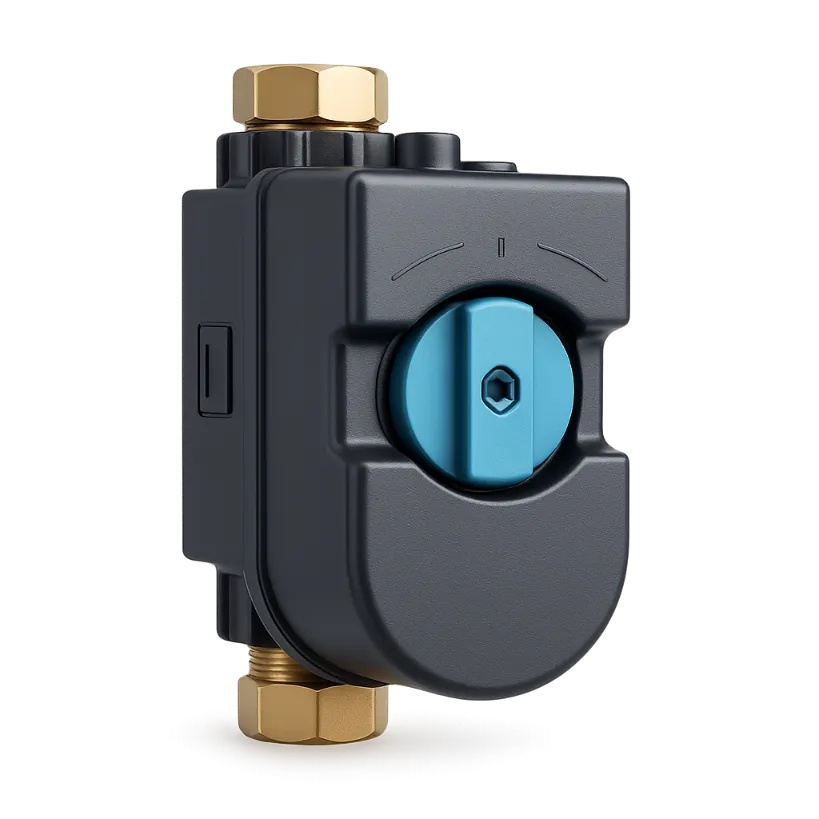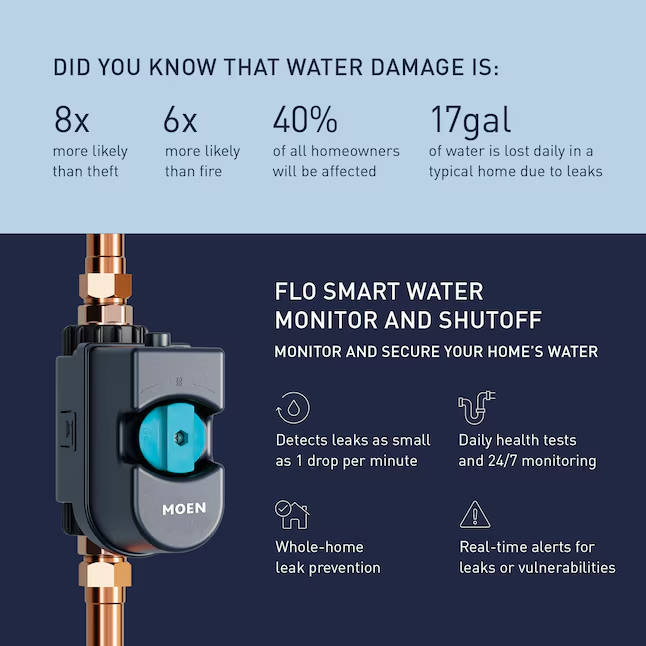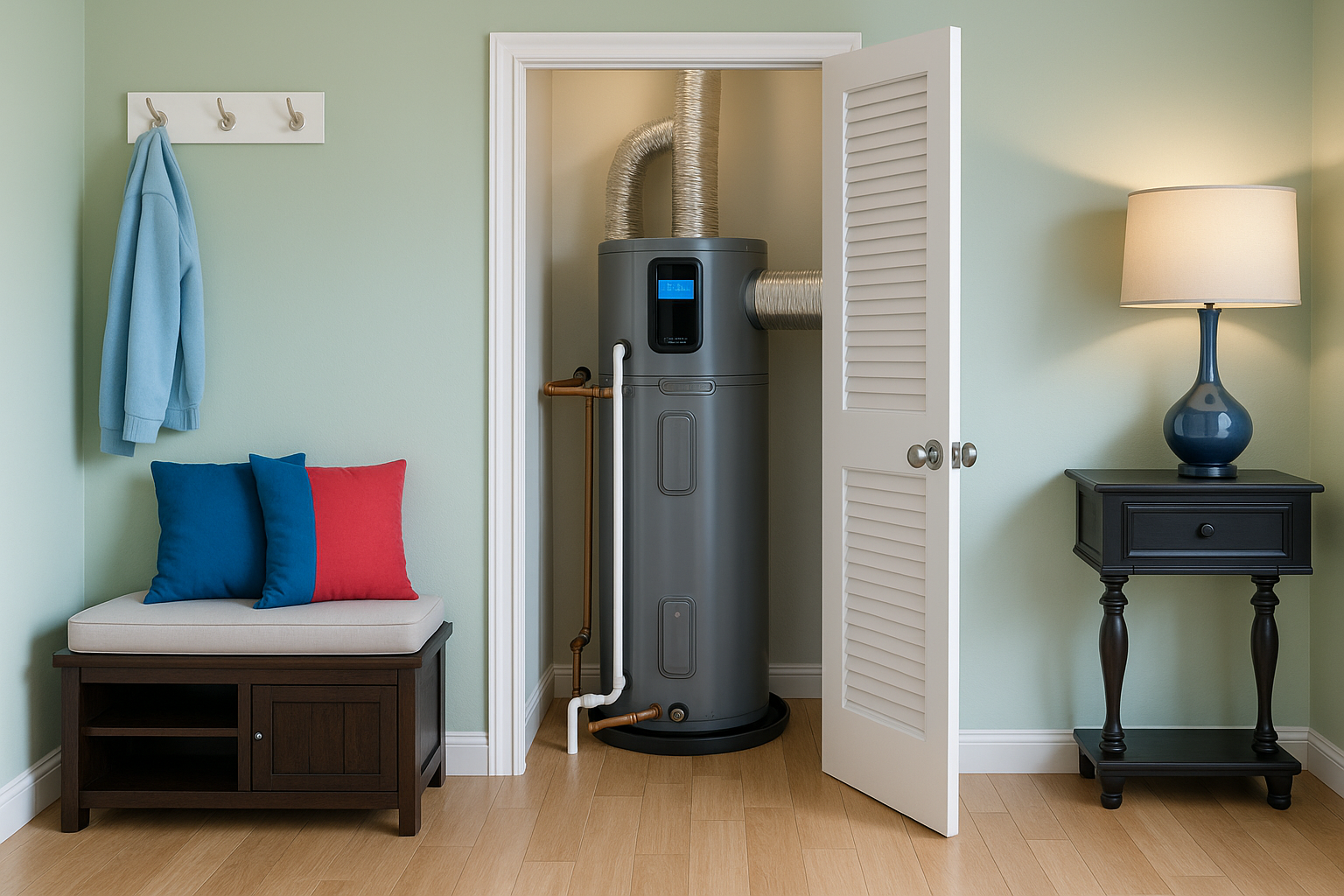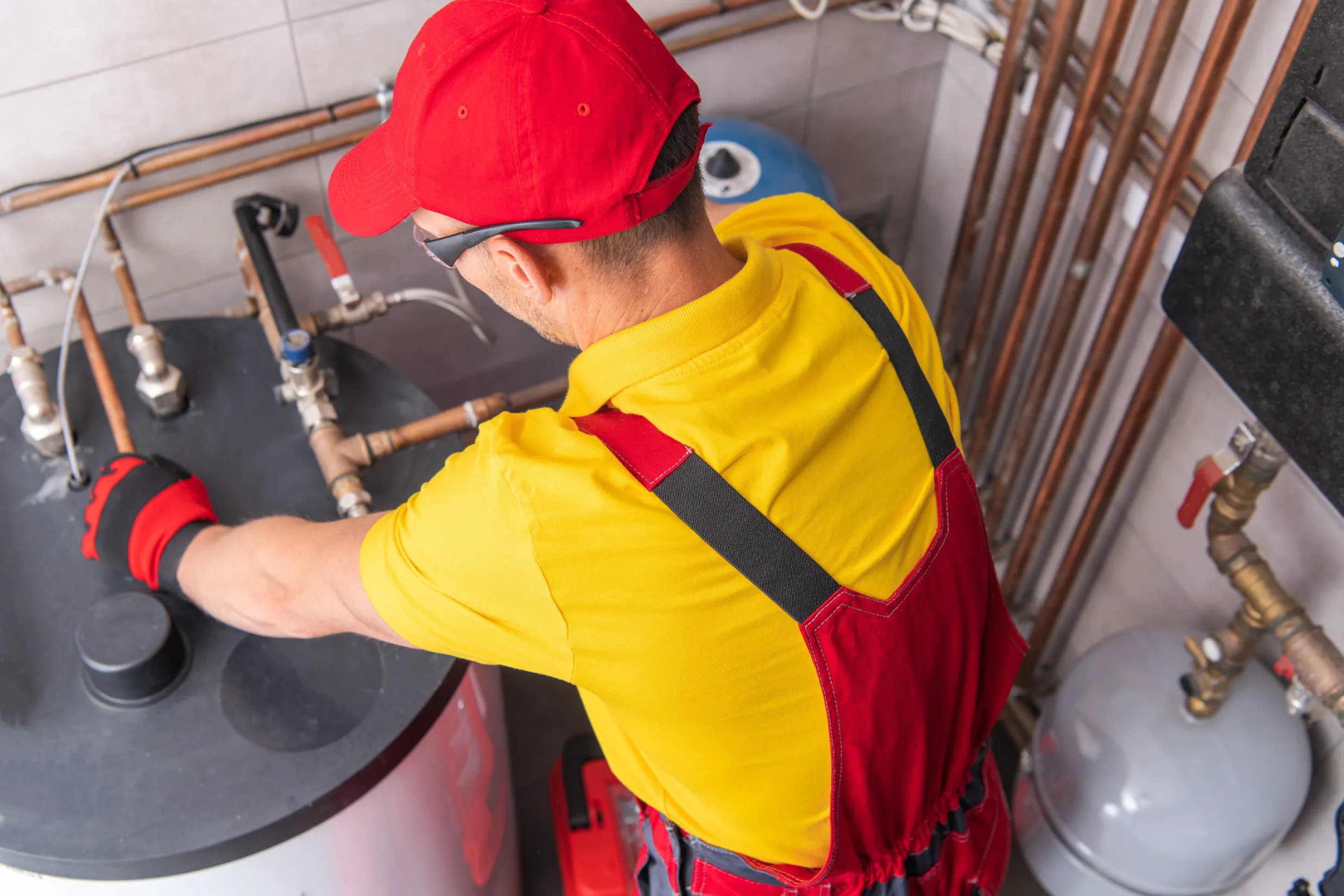
Why this matters: When something bursts, leaks, or shakes, the few seconds it takes to close the right shut-off valve can be the difference between a quick mop-up and a five-figure loss. As Bay-Area plumbers, we install, service, and replace hundreds of shut-off valves each year. This guide distills what we look for on site—what to install where, how to keep it code-compliant, and when “smart” and “seismic” protection are worth it.
1) What Shut-Off Valves Do (Water vs. Gas)
Shut-off valves do one simple thing: they give you control. On the water side, you’ll find a main shut-off where water enters the house and individual “fixture stops” at sinks, toilets, dishwashers, and other points of use. On the gas side, there’s typically a manual valve at the meter and appliance connectors—and, in seismic zones, an automatic seismic valve can shut gas during an earthquake.
Most modern water shut-offs are quarter-turn ball valves—a drilled sphere rotates 90° to open/close. Older installs often used gate valves (a threaded stem raises a metal gate) or globe/compression styles with washers. Ball valves are faster to operate, less prone to sticking, and typically seal more reliably after years of inactivity.
2) Your Main Water Shut-Off: Ball vs. Gate (and Why PRVs Matter)
Where it lives & why upgrades pay off
The main shut-off usually sits just after the water meter (exterior box) or where the service line enters the building. If your home still has a gate valve, consider upgrading to a full-port ball valve for fast, dependable shut-offs—especially important if you ever add a smart valve downstream.
The 80-psi rule (and PRVs)
California Plumbing Code caps static pressure at 80 psi. If your service pressure is higher, a pressure-reducing valve (PRV) is required to protect piping, fixtures, and appliances. In many Bay-Area neighborhoods we see wide swings—60 psi overnight and 100+ midday—so a PRV is cheap insurance and a code requirement when pressure exceeds the limit.
Placement best practice
A clean sequence many jurisdictions recommend is: City meter → house main shut-off ball valve → PRV (if needed) → smart shutoff (e.g., Flo) → house branches. This layout preserves manual control even if the smart valve needs service. Moen’s guidance mirrors this: install the Flo unit “on the main water line after the shut-off valve and pressure-reducing valve and before any branches.”
3) Fixture Stops (Angle & Straight Stops): The Everyday Workhorses
Every fixture you touch regularly—bath lavs, kitchen sink, toilet, dishwasher, fridge icemaker—should have an accessible, functional stop. When hoses blow or cartridges fail, you want to isolate just that fixture and keep the rest of the home online.
Code snapshot
Uniform/California Plumbing Code requires accessible stop valves for plumbing fixtures and supply connections (with a few specific exceptions). In practice, we expect to see a shut-off at each fixture supply.
Quarter-turn ball stops vs. multi-turn compression
- Quarter-turn ball stops (3/8″ OD compression outlet is common): durable, positive shut-off, and easy for homeowners to operate under stress.
- Multi-turn compression/globe stops: functional, but the stem packing and washer can wear; they often seize if never exercised.
When we remodel or service an older home, we usually swap to quarter-turn ball stops and stainless braided supply lines at the same time. This small upgrade pays for itself the first time someone over-tightens an old multi-turn and it starts weeping at the stem.
Angle vs. straight stops
Angle stops turn the flow 90° (most common under sinks/toilets). Straight stops keep flow in-line (used where the pipe comes out of the floor toward a toilet, or in supply boxes). Choose the geometry that gives you a short, kink-free path to the fixture hose.
4) Appliance & Specialty Shut-Offs
- Dishwashers & refrigerators: These often tee off the kitchen sink stops. We prefer a dedicated two-port stop or an accessible box valve to avoid crawling in deep cabinets during an emergency.
- Washing machine: If you still have two separate 1/4-turn valves, exercise them twice a year. Consider a single-lever laundry box valve for fast “both-sides” shut-off.
- Irrigation & hose bibbs: Add a house-side shut-off for irrigation zones so you can winterize or isolate yard leaks without shutting water to the home.

5) Smart Whole-Home Water Shutoff — Flo by Moen
What it is: A motorized valve with inline sensors and a controller. It continuously measures flow, pressure, and temperature, uses algorithms to spot leaks (from pinhole to burst), and can automatically close the water. You get alerts and manual control in the app.
How it works (plumber’s view)
- Install location: On the main water line, after the manual main valve and PRV, before any branches—so one closure protects the whole house.
- Self-tests: Flo can run daily “MicroLeak” health tests to detect small leaks you might never see.
- Connectivity & power: Needs 2.4 GHz Wi-Fi and standard power via the included adapter; sizes are typically ¾″ or 1″ to match the service.
Where it shines
- Unoccupied periods: Vacations, rentals, or ADUs where leaks could go unnoticed.
- High-finish interiors: Hardwood floors, below-grade spaces, or homes with prior water losses.
- Insurance synergies: Some carriers offer discounts or deductible credits for automatic shutoff devices—check with your provider.
Plumber tips for a clean install
- Verify service pressure (add/adjust PRV if >80 psi).
- Orient the arrow with flow, keep 10–12″ straight pipe where possible for the sensor, and avoid installing directly after turbulent tees/elbows unless the manufacturer allows it.
- Add unions or press couplings for easy service and ensure a proper bonding jumper if the metallic main is cut.
- Give the homeowner a manual bypass plan (ball valve with unions) so they can restore water if Wi-Fi or power is down.
Owner routine
Keep the app notifications on, run a manual valve exercise every few months, and update Wi-Fi credentials after router changes. If the system closes water, address the alert before forcing it back open—automatic closures usually indicate a real anomaly.
6) Seismic Gas Shut-Off — Little Firefighter
What it is: A mechanical valve that trips closed during significant seismic activity and must be manually reset. The concept is simple: protect the building from gas-fed fires if piping or appliances are damaged by shaking.
Code & approvals you’ll care about (Bay Area)
- Local adoption: Bay-Area authorities having jurisdiction (AHJs) follow the California Plumbing and Mechanical Codes with local amendments. Some cities require seismic gas shut-off valves at time of sale or during major remodels. Always verify current rules with your city or county building department.
- Product compliance: Use a listed/approved seismic gas shut-off valve per the manufacturer’s current installation instructions. Confirm the model’s active listing/certification and sizing with your AHJ and gas utility.
- Standards: Manufacturers typically design to recognized seismic shutoff criteria; verify the current standard and listing in the product documentation.
How the Little Firefighter valve works
- Trigger: A calibrated seismic mechanism trips during significant shaking (marketing materials commonly reference a threshold around moderate earthquakes; verify model specifics).
- Reset: After inspection and when it’s safe, the valve is reset manually (accessible from one or both sides, per model).
- Orientations & sizes: Horizontal, vertical, and 90° variants from ¾″ up through larger sizes; pick the orientation that matches meter piping and clearance.
Plumber field notes
- Install on the customer side of the meter in an accessible location per the listing and local utility guidance.
- Use manufacturer stabilizer brackets if the run is flexible or subject to vibration to reduce nuisance trips.
- After any event that trips the valve, have gas piping and appliances inspected by a qualified technician before reset.
7) Choosing the Right Valve for Each Location
8) Maintenance, Testing & Replacement Intervals
Water side
- Exercise manual valves twice a year: quarter-turn fully open/closed to prevent mineral “freezing.”
- Angle stops: Replace older multi-turn stops proactively during faucet/toilet swaps; install new braided supplies with fresh ferrules.
- Flo by Moen: Confirm Wi-Fi connection after router changes; schedule the device’s health tests; review any “continuous flow” or “drip rate” alerts in the app.
Gas side
- Visually inspect the seismic valve annually for corrosion, missing brackets, or physical damage.
- After a trip (or if you suspect a trip), have the entire gas system checked before reset; never bypass the device to relight appliances after an event.
9) Permits, Codes & The Fine Print (Bay Area)
- Fixture stops: The plumbing code expects accessible control valves at fixtures/supplies (with limited exceptions).
- 80-psi maximum static pressure: A PRV is required where pressure exceeds this limit.
- Seismic gas shut-off valves: Requirements vary by city/county. Check with your local building department (e.g., Oakland, Berkeley, Alameda, San José, Contra Costa jurisdictions) for current ordinances and permit triggers.
- Product listings: Use listed/approved valves and follow the manufacturer’s current installation manual. Your AHJ and gas utility can confirm acceptable listings and placement.
Always pull the required permits for gas or water repiping and follow the manufacturer’s current installation instructions—especially for smart devices that depend on straight-run lengths, location relative to PRVs, and power/wireless requirements.
10) A 20-Minute Home Shut-Off Audit (What We Do on a Service Call)
- Main water valve: Locate it, label it, and test it. If it won’t fully close or is a corroded gate valve, plan a swap to a full-port ball valve.
- Static pressure: Check at a hose bibb with a gauge. If >80 psi, quote a PRV and explain why it protects fixtures and meets code.
- Flo readiness: If a smart valve is desired, confirm a nearby receptacle, Wi-Fi strength, and straight-run pipe. Review the app/account with the homeowner.
- Fixture stops: Open/close each. Replace sticky multi-turns with quarter-turn ball stops. Verify supply lines are recent and not kinked.
- Laundry box: Exercise hot/cold; recommend an easy single-lever upgrade if owners or tenants have trouble turning two valves quickly.
- Gas: Identify the manual meter cock and any seismic valve. If none is present where required, specify an approved Little Firefighter model and bracket set; explain reset procedures.
- Label & educate: Leave a small diagram showing where to shut water and gas. Make sure every adult in the home knows how.
When to Call a Pro
If a valve won’t turn, leaks at the stem, or the handle spins without shutting water, stop and call a licensed plumber. Gas work always requires a qualified, permitted contractor. We’ll size valves correctly, preserve bonding/grounding, pressure-test, and make sure you’re compliant with the latest local amendments.
Get Help from a Licensed Local Plumber - Contact Good Fit Plumbing Today!
Want us to audit your shut-offs, replace sticky angle stops, install a Flo smart shutoff, or add a Little Firefighter seismic gas valve? Book a visit—we’ll handle the permits, parts, and paperwork.











What Our Customers Say
The Good Fit Plumbing Process
.svg)
Step 1: Get in Touch

Step 2: Schedule an Appointment

Step 3: On-Site Evaluation

Step 4: Transparent Quotation

Step 5: Expert Service Delivery

Step 6: Review and Follow-Up

Why Choose Good Fit Plumbing

Fully Licensed Team

No Hidden Fees

Our Priority Is You

High Standards
Serving Your Community






